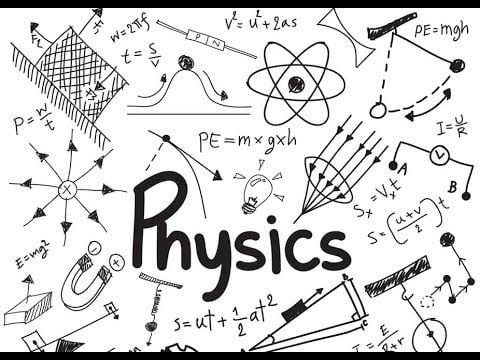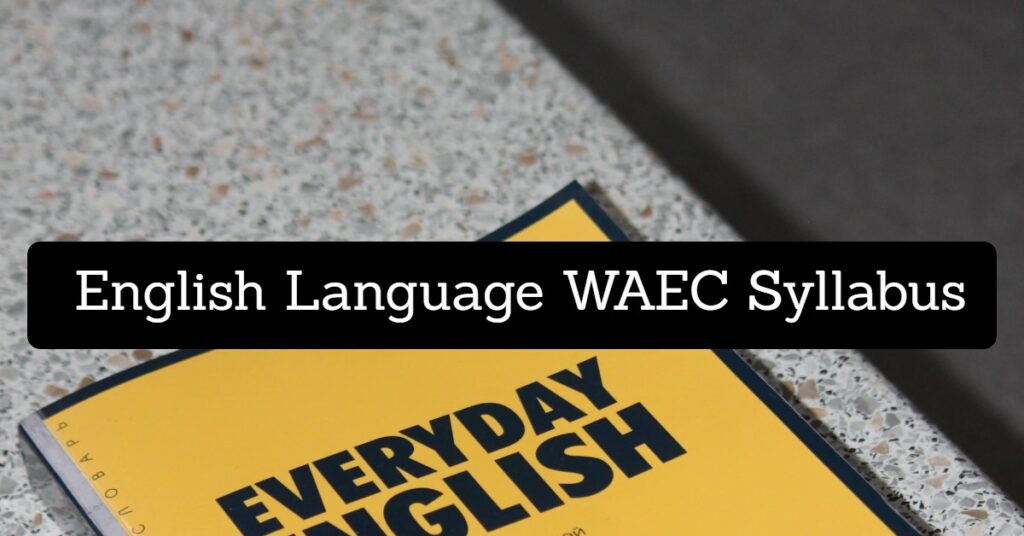
To prepare for the Physics examination, it’s essential to study the WAEC syllabus dedicated to the subject. This syllabus outlines the aims, objectives, notes, and format of the Physics exam.
Studying the Physics syllabus is crucial for effective exam preparation. It provides guidance on the topics to focus on and includes notes on key concepts that require attention.
Approaching exam preparation without utilizing the Physics syllabus is akin to heading to the farm without agricultural tools – it results in decreased productivity.
Make sure to commence your exam preparations by consulting the syllabus.
This post includes the Physics syllabus and recommended textbooks from the West African Examination Council (WAEC).
Feel free to ask any questions in the comment section. I’d love to hear from you.
Physics Syllabus
The syllabus evolved from the Senior Secondary School teaching syllabus and is intended to indicate the scope of the course for the Physics examination.
It is structured with the conceptual approach. The broad concepts of matter, position, motion and time; energy; waves; fields; Atomic and Nuclear Physics, and electronics are considered and each concept forms a part on which other sub-concepts are further based.
Aims
The aims of the syllabus are to enable candidates
- acquire a proper understanding of the basic principles and applications of Physics;
- develop scientific skills and attitudes as pre-requisites for further scientific activities;
- recognize the usefulness, and limitations of the scientific method to appreciate its applicability in other disciplines and in every life;
- develop abilities, attitudes and skills that encourage efficient and safe practice;
- develop scientific attitudes such as accuracy, precision, objectivity, integrity, initiative and inventiveness.
Assessment Objectives
The following activities appropriate to Physics will be tested:
- Acquisition of knowledge and understanding:
- Candidates should be able to demonstrate knowledge and understanding of
- Scientific phenomena, facts laws, definitions, concepts and theories;
- Scientific vocabulary, terminology and conventions (including symbols, quantities and units);
- The use of scientific apparatus, including techniques of operation and aspects of safety;
- Scientific quantities and their determinations;
- Scientific and technological applications with their social economic and environmental implications.
- Candidates should be able to demonstrate knowledge and understanding of
- Information Handling and Problem-solving
- Candidates should be able, to use visual, oral, aural and written (including symbolic, diagrammatic, graphical and numerical) information to
- locate select, organize and present information from a variety of sources including everyday experience;
- analyse and evaluate information and other data;
- use the information to identify patterns, report trends and draw inferences;
- present reasonable explanations for natural occurrences, patterns and relationships;
- make predictions from data.
- Candidates should be able, to use visual, oral, aural and written (including symbolic, diagrammatic, graphical and numerical) information to
- Experimental and Problem-Solving Techniques
- Candidates should be able to
- follow instructions;
- carry out experimental procedures using apparatus;
- make and record observations, measurements and estimates with due regard to precision, accuracy and units;
- interpret, evaluate and report on observations and experimental data;
- identify problems, plan and carry out investigations, including the selection of techniques, apparatus, measuring devices and materials;
- evaluate methods and suggest possible improvements;
- state and explain the necessary precautions taken in experiments to obtain accurate results.
- Candidates should be able to
Scheme of Examination
There will be three papers, Papers 1, 2 and 3, all of which must be taken.
Papers 1 and 2 will be composite papers to be taken in one sitting.
Paper 1
Will consist of fifty multiple-choice questions lasting 1¼ hours and carrying 50 marks.
Paper 2
Will consist of two sections, Sections A and B lasting 1½ hours and carrying 60 marks.
Section A
Will comprise seven short-structured questions.
Candidates will be required to answer any five questions for a total of 15 marks.
Section B
Will comprise five essay questions out of which candidates will be required to answer any three for 45 marks.
Paper 3
Will be a practical test for school candidates or an alternative to a practical work paper for private candidates?
Each version of the paper will comprise three questions out of which candidates will be required to answer any two in 2¾ hours for 50 marks.
WAEC Physics Syllabus
It is important that candidates are involved in practical activities in covering this syllabus.
Candidates will be expected to answer questions on the topics set in the column headed ‘ TOPIC’. The ‘NOTES’ are intended to indicate the scope of the questions which will be set but they are not to be considered as an exhaustive list of limitations and illustrations.
NOTE: Questions will be set in S.I. units.
However, multiples or sub-multiples of the units may be used.
Part 1
Interaction of Matter, Space & Time
- Concepts of matter
- Fundamental and derived quantities and
units- Fundamental quantities and units
- Derived quantities and units
- Position, distance and displacement.
- Concept of position as a location of point-rectangular coordinates.
- Measurement of distance
- Concept of direction as a way of locating a point–bearing
- The distinction between distance and displacement
- Mass and weight
- The distinction between mass and weight
- Time
- Concept of time as an interval between physical events
- Measurement of time
- Fluid at rest
- Volume, density and relative density
- Pressure in fluids
- Equilibrium of bodies
- Archimedes’ principle
- Law of flotation
- Motion
- Types of motion: Random, rectilinear, translational, Rotational, circular, orbital, spin, Oscillatory.
- Relative motion
- Cause of motion
- Types of force:
- Contact force
- Non-contact force(field force)
- Solid friction
- Viscosity (friction in fluids)
- Simple ideas of circular motion
- Speed and velocity
- Concept of speed as a change of distance with time
- Concept of velocity as a change of displacement with time
- Uniform/non-uniform speed/velocity
- Distance/displacement-time graph
- Rectilinear acceleration
- Concept of Acceleration/deceleration as increase/decrease in velocity with time.
- Uniform/non-uniform acceleration
- Velocity-time graph
- Equations of motion with constant acceleration; Motion under gravity is a special case.
- Scalars and vectors
- Concept of scalars as physical quantities with magnitude and no direction
- Concept of vectors as physical quantities with both magnitude and direction.
- Vector representation
- Addition of vectors
- Resolution of vectors
- Resultant velocity using vector representation.
- Equilibrium of forces
- Principle of moments
- Conditions for the equilibrium of rigid bodies under the action of parallel and non-parallel forces.
- Centre of gravity and stability
- Simple harmonic motion
- Illustration, explanation and definition of simple harmonic motion (S.H.M)
- Speed and acceleration of S.H.M.
- Period, frequency and amplitude of a body executing S.H.M.
- Energy of S.H.M
- Forced vibration and resonance
- Newton’s laws of motion:
- First Law: Inertia of rest and inertia of motion
- Second Law: Force, acceleration, momentum and impulse
- Third Law: Action and reaction
Part 2
Energy: Mechanical and Heat
- Energy
- Forms of energy
- World energy resources
- Conservation of energy.
- Work, Energy and Power
- Concept of work as a measure of energy transfer
- Concept of energy as the capability to do work
- Work done in a gravitational field.
- Types of mechanical energy
- Potential energy (P.E.)
- Kinetic energy (K.E)
- Conservation of mechanical energy.
- Concept of power as the time rate of doing work.
- Application of mechanical energy machines.
- Levers, pulleys, inclined plane, wedge, screw, wheel and axle, gears.
- Heat Energy
- Temperature and its measurement
- Effects of heat on matter e.g
- Rise in temperature
- Change of phase state
- Expansion
- Change of resistance
- Thermal expansion – Linear, area and volume expansivities
- Heat transfer Condition, convention and radiation.
- The gas laws-Boyle’s law Charles’ law, pressure law and general gas law
- Measurement of heat energy:
- Concept of heat capacity
- Specific heat capacity.
- Latent heat
- Concept of latent heat
- Melting point and boiling Point
- Specific latent heat of fusion and vaporization
- Evaporation and boiling
- Vapour and vapour pressure
- Humidity, relative humidity and dew point
- Humidity and the weather
Part 3
Waves
- Production and propagation of waves
- Production and propagation of mechanical waves
- Pulsating system: Energy transmitted with definite speed, frequency and wavelength.
- Waveform
- Mathematical relationship connecting frequency (f), wavelength(?), period (T) and velocity (v)
- Types of waves
- Transverse and longitudinal
- Mathematical representation of wave motion.
- Properties of waves: Reflection, refraction, diffraction, Interference, superposition of progressive waves producing standing stationary waves
- Light waves
- Sources of light
- Rectilinear propagation of light
- Reflection of light at plane surface: plane mirror
- Reflection of light at curved surfaces: concave and convex mirrors
- Refraction of light at plane surfaces: rectangular glass prism (block) and triangular prism.
- Refraction of light at curved surfaces: Converging and diverging lenses
- Application of lenses in optical instruments.
- Dispersion of white light by a triangular glass prism.
- Electromagnetic waves: Types of radiation in electromagnetic Spectrum
- Sound Waves
- Sources of sound
- Transmission of sound waves
- Speed of sound in solid, liquid and air
- Echoes and reverberation
- Noise and music
- Characteristics of sound
- Vibration in strings
- Forced vibration
- Resonance
- Harmonies and overtones
- Vibration of air in pipe – opennand closed pipes
Part 4
Fields
- Description property of fields.
- Concept of fields: Gravitational, electric and Magnetic
- Properties of a force field
- Gravitational field
- Acceleration due to gravity, (g)
- Gravitational force between two masses: Newton’s law of gravitation
- Gravitational potential and escape velocity.
- Electric Field
- Electrostatics
- Production of electric charges
- Types of distribution of charges
- Storage of charges
- Electric lines of force
- Electric force between point charges: Coulomb’s law
- Concepts of electric field, electric field intensity (potential gradient) and electric potential.
- Capacitance: Definition, arrangement and application
- Electrostatics
- Current electricity
- Production of electric current from primary and secondary cells
- Potential difference and electric current
- Electric circuit
- Electric conduction through materials
- Electric energy and power
- Shunt and multiplier
- Resistivity and Conductivity
- Measurement of electric current, potential difference, resistance, e.m.f. and internal resistance of a cell.
- Magnetic field
- Properties of magnets and magnetic materials.
- Magnetization and demagnetization.
- Concept of magnetic field
- Magnetic force on:
- a current-carrying conductor placed in a magnetic field;
- between two parallel current-carrying conductors
- Use of electromagnets
- The earth’s magnetic field
- Magnetic force on a moving charged particle
- Electromagnetic field
- Concept of electromagnetic field
- Shunt and multiplier
- Resistivity and Conductivity
- Measurement of electric current, potential difference, resistance, e.m.f. and internal resistance of a cell.
- Magnetic field
- Properties of magnets and magnetic materials.
- Magnetization and demagnetization.
- Concept of magnetic field
- Magnetic force on:
- a current-carrying conductor placed in a magnetic field;
- between two parallel current-carrying conductors
- Use of electromagnets
- The earth’s magnetic field
- Magnetic force on a moving charged particle
- Electromagnetic field
- Concept of electromagnetic field
- Electromagnetic induction
- Faraday’s law ,Lenz’s law and motor-generator effect
- Inductance
- Eddy currents
- Power transmission and distribution
- Simple a.c. circuits
- Graphical representation of e.m.f and current in an a.c. circult.
- Peak and r..m.s. values
- Series circuit containing resistor, inductor and capacitor
- Reactance and impedance
- Vector diagrams
- Resonance in an a.c, circuit
- Power in an a.c. circuit
Part 5
Atomic and Nuclear Physics
- Structure of the atom
- Models of the atom
- Energy quantization
- Photoelectric effect
- Thermionic emission
- X-rays
- Structure of the nucleus
- Composition of the nucleus
- Radioactivity – Natural and artificial
- Nuclear reactions – Fusion and Fission
- Wave-particle paradox
- Electron diffraction
- Duality of matter
WAEC Recommended Textbooks for Physics
- Ike, E. E (2014) Essential Principles of Physics, Jos ENIC Publishers.
- Ike, E. E (2014) Numerical Problems and Solutions in Physics, Jos, ENIC Publishers.
- Nelson, M (1977) Fundamentals of Physics, Great Britain: Hart Davis Education.
- Nelson, M and Parker Â… (1989) Advanced Level Physics (Sixth Edition), Heinemann.
- Okeke, P. N and Anyakoha, M. W (2000) Senior Secondary School Physics, Lagos, Pacific Printers.
- Olumuyionwa A. and Ogunkoya O. O (1992) Comprehensive Certificate Physics, Ibadan: University Press Plc.
Let me know if you have any questions or need further clarification. I would love to assist you.

